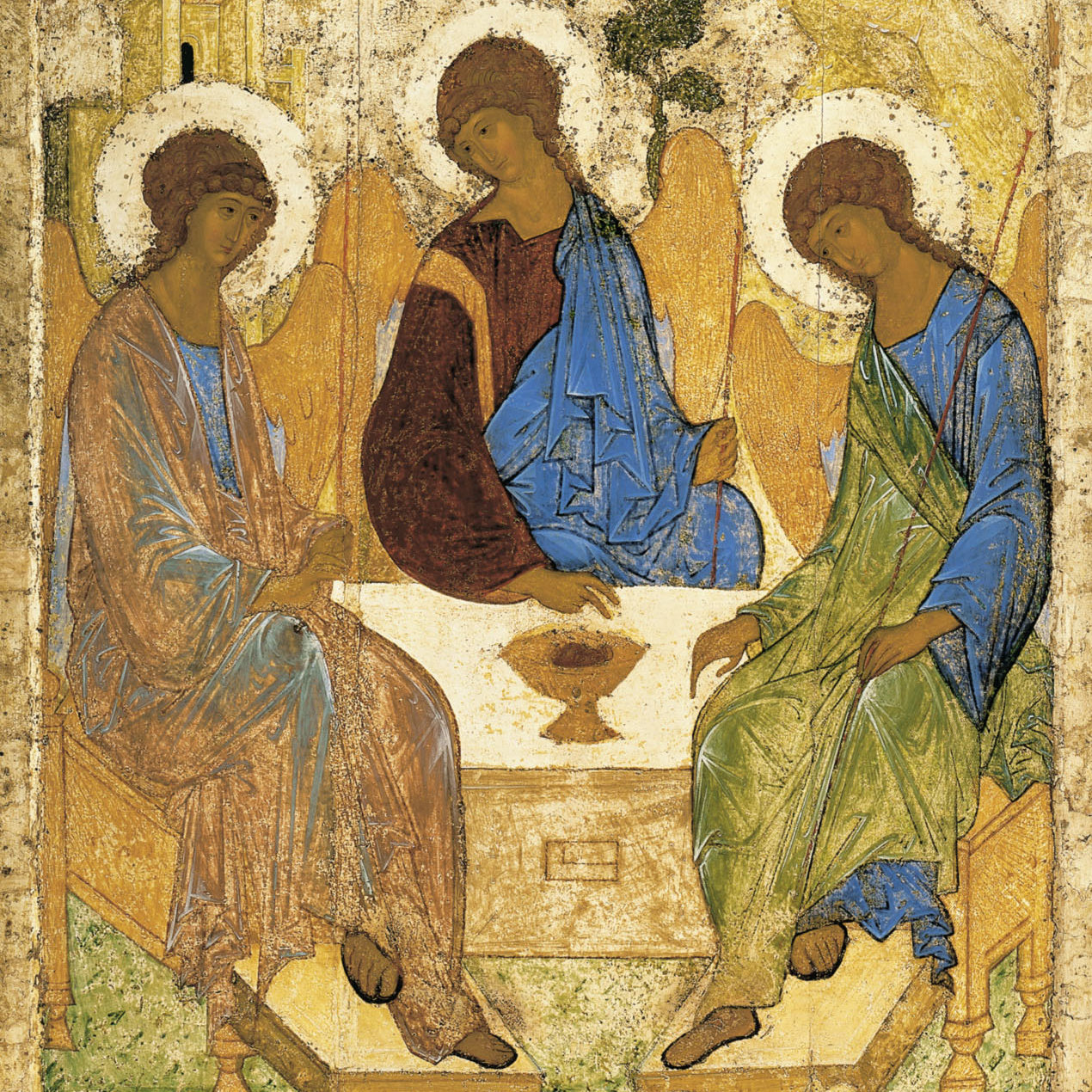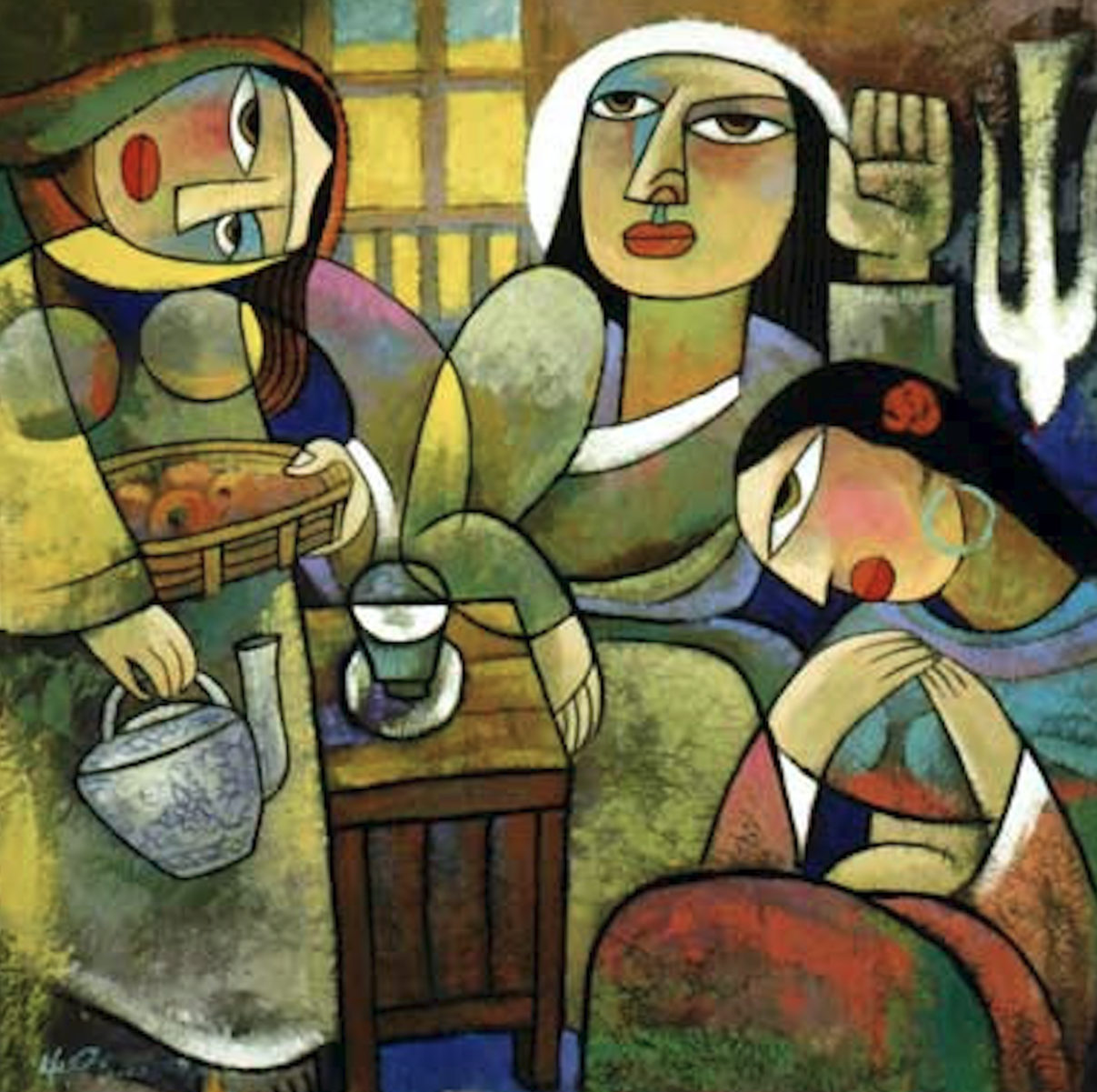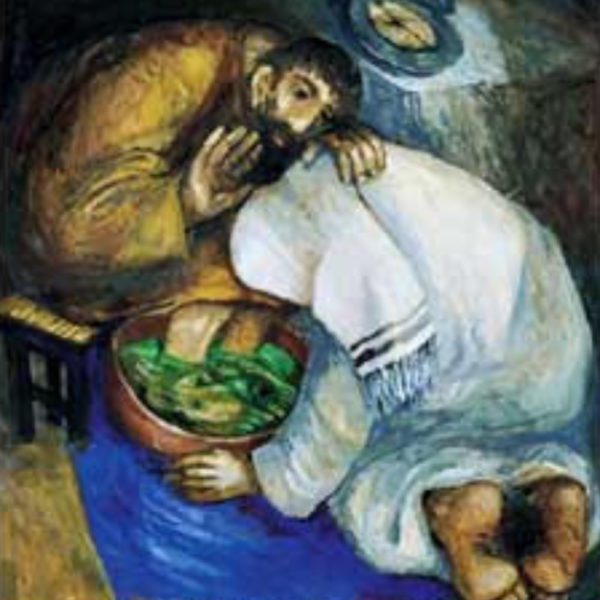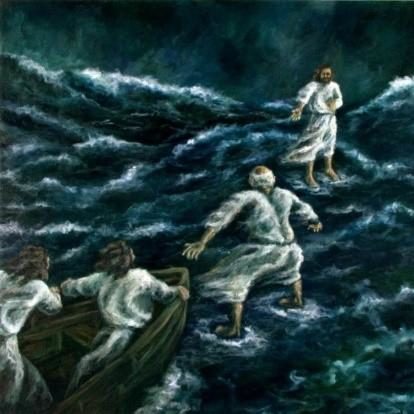Why do we do what we do? As well as our vision and our values, here we use five words and images to expand a bit on the theology behind Lee Abbey.
Click each image to expand on that area.
 Community
Community
It all begins with God. The draw, the urge, the desire to live in Christ-centred community is not so much an expression of human faith, but of the nature of God.
“God is love, and those who live in love live in God and God lives in them.” 1 John 4:16
It is also an expression of the way he has created us.
“It is not good for the man to be alone.” Genesis 2:18
But this love that we experience when we encounter God isn’t the love of a besotted couple who crave only one another’s company. It is the love of the three; dynamic, interactive, open, giving glory to one another (John 17: 1-5), depending on one another (John 16:12-15), and desiring always that humanity may be part of their community (John 17:20-23). This reality is beautifully expressed in Rublev’s icon of the Trinity, springing as it does from the description of Abraham’s hospitality to God (Genesis 18). Facing us is the empty 4th place at the table. An implicit invitation to come and sit and eat, to come and be welcomed into the life of the divine community (John 10:10).
Sitting at the table with the Holy Trinity, even in our imagination, is not just a place of comfort and welcome. It can also be a disturbing and discomforting place, a place where we are ‘fully known’. That reality is part of the experience of living in Christ Centred Community. Despite our best efforts the masks we construct slip. The reality of living in daily contact with people who stretch our love muscles wears away our ‘niceness’. The illusion of competence and self-sufficiency that western culture so prizes and works so hard to embody, begins to wash away. Yet we discover, dressed in the rags that are left, that in our weakness there is our strength (2 Cor 12:7-10); for it leads us to trust in others, depend on others for help, forgiveness and support, and so trust deeper in God. It is those moments of weakness, and those times of ‘failure’, that draw us deeper into the reality of community.
 Hospitality
Hospitality
Mary and Martha
Luke 10:38-42
“Welcome to our home” says the large poster in reception. “Being God’s welcome” is one of the 3 purposes that Lee Abbey has sought to live out all its life. Hospitality is at the heart of who we are. The story of Jesus receiving Mary and Martha’s hospitality is a useful starting point to explore Christian hospitality and illustrates some of the tensions within it.
We worship and serve a welcoming God. As David Runcorn reminds us:
“Hospitality and community reveal the character of God like no other activity.” (‘Celebrating Community’ p.19).
Hospitality is the means by which we create and enlarge community. It requires the hosts to ‘give up territory’, to ‘un-self’ themselves and give up some of their control in order to give space to the other, be that guest or new community member. In doing this we are again following the pattern of Christ’s life and the ‘descending, humbling way of love’ described in Philippians 2. There we are told that Jesus didn’t cling to equality with God, “but he made himself nothing, taking the very nature of a servant” (Philippians 2:7).
He gave up territory, he gave up his place of security with the Father in order to be known, to be welcomed by humanity and through that to make people welcome within the eternal Trinity, the eternal home of humanity.
In the stranger at our door we see Christ coming towards us (Matthew 25:31-46), and like Mary and Martha we are invited to make them feel at home. To make Christ welcome in our guests requires us to respond both as Mary and Martha and to live with the tension that this causes.
Hospitality requires the community to undertake lots of practical activities; to make beds, clean toilets, cook food, cut the grass, maintain the central heating, book taxis, plan speakers and run activities. Rightly this ‘Martha Hospitality ‘is the focus of a lot of our time and attention and we have lots of systems and processes and willing community members to make it happen. In order to accomplish these tasks we willingly submit to the discipline of ‘rotas’ and undertake activities we might not otherwise choose to do. In this submission and service, in the times of tiredness, and what can feel like mundane routine, we are changed as we learn more of Christ’s servant heart. Our worship is one of the places where we bring our experiences of living out ‘Martha Hospitality’ to God, reflect on them and learn from them.
At times, like Martha, this practical hospitality makes us anxious and over busy but generally we are the ‘active agents’ in the situation, we are in control of it. But that is only half the welcome Mary and Martha offered Jesus. The other part was Mary’s willingness to sit and listen. This ‘Mary Hospitality’ involved her ‘wasting time’ sat at Jesus’ feet. By sitting and listening Mary signalled her intent to be a disciple. She allowed herself to be changed by her guest, to receive what he brought with him and give it importance within the life of the household community. Even at the expense of helping her sister fulfil the practical obligations of hospitality.
In our hospitality to guests there is the same Mary and Martha tension. Unless given an appropriate counter balance the work of practical hospitality will dominate our lives. That counter balance begins in our life of prayer and worship. The place where together we learn and celebrate the character of Christ, where we repeatedly ‘surrender territory’ to him in our lives. It is also the place where we find ourselves welcomed by him. Christ as both host and guest in our worship is most clearly seen in the communion service. Our worship is also the place where we pray for those we are welcoming, we bring to God our experiences of them and responses to them, to discern what God is saying to us. Rooted in worship this ‘Mary hospitality’ is given expression in the dining room conversations, the tea and coffee encounters, the evening activities shared, the interactions between the Host Team and the guests and in their sharing in the teaching sessions. This aspect of Mary hospitality in engaging with guests and welcoming Christ in them can be sacrificial but also deeply enriching; and is an essential part of community life. As we take courage to engage and go beyond sometimes unpromising first impressions, we can find in our guests and their inspirational stories of how they have been used by God over the years, remarkable and inspirational evidence of God’s goodness and his encouragement for our own lives. We can meet Christ himself in our guests as we welcome, listen to and share with them. All this is celebrated and given value by the sharing of the stories of those encounters within community, and in the acknowledging of the challenges and changes those encounters have brought.
From our experience of Christ as guest and host in worship, we are better able to follow his example of hospitality, and to recognise him in our guests. It is part of the role of the Pastoral Team and the Senior Leadership Team to maintain and promote space for this ‘Mary hospitality’ and sustain the life of prayer and worship that underpins it. It is part of the role of the Board of Trustees to acknowledge the importance of this Mary hospitality and protect it within the ongoing vision and mission of Lee Abbey Devon.
 Service
Service
Jesus washes the disciple’s feet
John 13:1-16
An attitude of loving service is one of the foundations of true hospitality. As with so many things in the Christian faith, it begins with Jesus. In washing his disciple’s feet Jesus gives us the archetypal pattern of service and then he invites us to copy him.
“Now that I, your Lord and Teacher have washed your feet, you also should wash one another’s feet.” (John 13:14).
Jesus’ act of service is rooted in his knowledge of who he is in God:
“Jesus knew that the Father had put all things under his power, and that he had come from God and was returning to God; so – – -. “(John 13:3)
It was an expression of his identity not of his need. In the same way Christian service comes out of the individual’s knowledge that they are known, loved, saved and called by Christ. It is an expression of who they are in Christ. Christian service is therefore an expression of Christ’s love and a means by which Christ’s kingdom grows.
Intentional Christian Community should be a place of healing into which we can bring our wounds and our brokenness. That healing takes place as we serve others. For it is through giving ourselves in service to others that we are drawn from looking inward to looking outward. Serving makes real the giving away of ourselves, and makes space for us to receive and be served by Christ. Service is therefore the context in which growth as disciples takes place. Through serving other people and serving the mission of the organisation, we are challenged and changed.
A community of Christian servants is also a place where we learn more deeply the grace of being served. As the process of being on community peels away our barriers and pretences our times of need and weakness become part of what we share with others. Bonhoeffer in his book on community, ‘Life Together’, speaks about being ‘a community of the undevout’ and of the need for continued forgiveness and vulnerability. Allowing others to serve us becomes part of our healing and a means of growth.
 Discipleship
Discipleship
Peter stepping out of the boat
Matthew 14:22-33
As disciples of Jesus ‘The Rabbi’, the first disciples were called ‘to follow’, to come and be with Jesus. The first question Andrew and his friend asked Jesus in John 1:38 wasn’t, ‘What are you teaching?’ It was, ‘Where are you staying?’ Jesus’ response was ‘Come and see.’ (John 1:39). He made them welcome where he was. The call of discipleship is the call to share life with Jesus. To see where he is and go and join him, to see what he is doing and do likewise, to hear what he is saying and to live out his teaching. It all begins with stepping out in response to a call. As Peter demonstrates so graphically in the storm, that stepping out to join Jesus where he is and join in what he is doing often feels like stepping from a place of security into a place of risk and uncertainty. It is only possible when we keep our eyes firmly fixed on Jesus.
For the post Resurrection, post Ascension, post Pentecost followers of Jesus the path of Discipleship, of living life consciously seeking to share in the life of Jesus, is built and directed by the Holy Spirit, the Spirit of Christ. As Paul urges his readers in Ephesus:
“Live a life worthy of the calling you have received.” (Ephesians 4:1)
In following the way of the spirit:
“We will in all things grow up into him who is the head, that is, Christ.” (Ephesians 4:15)
Growing in Christ-likeness by the work of the Spirit leads to being part of Christ’s body, the church. It is through living in this Christ Centred Community that we can become like Christ and live out his life of love (Ephesians 5:1). Just as hospitality leads to the creation of community, so the path of discipleship leads to Christ like hospitality.
Throughout the life of the Lee Abbey Community there has been a perceived tension between serving guests and community members growing as disciples (‘Celebrating Community’ p.4&5). Are we primarily a retreat and conference centre, or a discipleship school? The answer, explicit or implicit, has been different at different times. However, the tension between these two elements of Lee Abbey life, ‘service’ and ‘discipleship’ can be a creative one. Living in a community that serves is the context for growing in discipleship.
The hopes new community members most often express for their time on community are ‘learning more about God’ and ‘discovering his will for my life’. They want to grow as disciples. This desire for personal growth is also a key characteristic of the ‘millennial generation’ (18-35 year olds) who make up the majority of community. After the initial honeymoon period is over one of the disappointments that is often expressed is how much manual and menial work they are expected to do, how tiring the relentless routine of it is, and how ‘everything is focused on the guests’. It wasn’t what they expected or hoped for. It doesn’t feel very ‘spiritual’. When this is added to being in a foreign country far from loved ones, living with strangers from many different cultures and the loss of patterns of worship that have sustained them in the past, God can feel a long way away. However, with the right teaching and pastoral support this ‘stripping away’, this sense of loss, is often a crucial time of growth. This journey through the ‘U-bend of change’ is the raw material for discipleship development.
This is just one example of how the reality of being on community and working to offer other people God’s hospitality, enables people to grow as disciples. The business of ‘discipleship training’ in the Lee Abbey Community is therefore not just about delivering a particular teaching package. The task of those responsible for community Discipleship is to create and sustain the structures, the processes, the resources and the relationships that enable community members to reflect on and learn from their experiences; to help them discern where Jesus is in all of this, and encourage them to be willing, through the Holy Spirit, to respond to him and learn from him. This will include ‘teaching’, but as part of a larger process that has been helpfully described as an opportunity for a discipleship apprenticeship. Along with inputs from teaching Community members also need to be committed and engaged in that process for themselves for it is about being and doing, it is about ’getting out of the boat’.
Two additional reflections. Firstly, that to grow as disciples of Jesus is also one of the main reason why many guests visit Lee Abbey. Helping them to do this is part of our mission, ‘To renew and serve the church’. As we engage in ‘Mary hospitality’ and make space to listen and learn from their experience of discipleship, so our guests become another means by which Jesus challenges and changes community members and helps them grow as disciples. Likewise, community members sharing their individual and collective experience of growing as disciples, both in their informal interactions with guests and more formally in the teaching sessions, is a deep resource that we offer to our guests. Generations of community members living in that ‘getting out of the boat’ place that community life takes you to, and learning to trust again and again in God’s grace and provision, is part of what creates the thin place of grace that Lee Abbey is for so many people.
The second reflection is about the nature of Lee Abbey as a community of disciples. At any one time many of those on the resident community have had a strong sense of calling to come to Lee Abbey. Indeed, it is one of things that is looked for in the interview process. Many see themselves as following in Peter’s footsteps. For them responding to Jesus’ call and coming to Lee Abbey is a stepping out of the boat and on to the water. However, this is not a unique experience. Generations of community members have trod this path before them, many guests have followed this step in other contexts, and in the life of any one disciple there will be other calls and other opportunities to step out onto the water. This realization can help us see that although being part of the resident community can be a particularly intense time of discipleship development, it is part of a larger ‘Community of Discipleship’ that is gathered around Lee Abbey. The idea of ‘rings of community’ or ‘ripples of community’ might be a useful way to understand this. There is the resident community in the centre, there are members of the associate community, and then there are bands of volunteers, for example pastoral helpers and others, willing to commit themselves to the ministry of Lee Abbey on a regular basis. These might in the future include non-residential “extended community” who take promises. There are also local workers, regular guests, trustees and speakers for whom Lee Abbey remains a place of inspiration and discipleship growth. Some of these may be past Devon community members, but many will experience true community for the first time through becoming part of the outer rings. Keeping hold of this picture can help discern the many ways God uses the Lee Abbey Community, in its widest sense, as a tool for discipleship growth in the life of his church.
 Mission
Mission
Paul & Barnabas at Pisidian Antioch
Acts 13:42-48
The first time Paul and Barnabas spoke at the synagogue at Pisidian Antioch many Jews started to follow them and wanted to know more. When they returned a week later ‘the whole city gathered to hear the word of the Lord’ (v.44). Some of the Jews were jealous and heaped abuse on them. Paul and Barnabas answered them boldly:
“We had to speak the word of God to you first. Since you reject it … we now turn to the Gentiles. For this is what the Lord has commanded us: I have made you a light to the Gentiles, that you may bring salvation to the ends of the earth” (Isaiah 49:6). (vs.46-47)
Paul and Barnabas are saying that God clearly calls his people to engage in his mission and that mission is to all the peoples of the world. It is not an optional extra. The God who is community is the God of mission. He leaves space in his eternal relationship; through the Son, by the Spirit, he invites all people in.
The danger of any ‘Christ Centred Community’ is that it becomes a ‘Community Centred Community’! The call to hospitality and service however, is a call to continually look outwards from ourselves and see Christ coming towards us in the other. It is a call to mission.
Lee Abbey came into existence out of
“a deep spiritual concern for quickened life in the church and for a new spirit of evangelistic zeal” (Jack Winslow, The Lee Abbey Story, p.15).
This purpose was clearly expressed in the very first pamphlet that shared the Lee Abbey vision in 1945, entitled ‘A New Venture in Evangelism’:
‘The most urgent call to every Christian and the Church as a whole today is for adventurous evangelism and the rekindling of the fires of faith, prayer and witness. Nothing matters today more than the winning of men and women to a real experience of Christ as Saviour. This is the supreme task to which every effort must be directed.’
It was for that purpose Lee Abbey was purchased and a community was formed. This is expressed in many ways in the life of the community at Lee Abbey and in the ministry with guests. However, in our focus on ‘Being God’s Welcome” “Building Community’, and ‘Renewing and Serving the Church’, we need to keep hold of the missionary purpose of God and his church and always be looking for ways to be directly involved in the Holy Spirit’s business of ‘bringing salvation to the ends of the earth’, locally, regionally, nationally and internationally.
Sources
- Chris Edmondson & Emma Ineson. ‘Celebrating Community’. DLT. 2006.
- Jack Winslow. ‘The Lee Abbey Story’. 1968 ed.
- Brother Sam SSF. Lee Abbey Community Retreat Talks. January 2018.
- Bob Payne. Lee Abbey Corpus Sermon. May 2017.
- Simon Holland. Talks on Philippians 2. Nov. 2017
Ideas for further reading
- Dietrich Bonhoeffer. ‘Life Together’
- John Vincent ed. ‘Christian Communities’ Ian Adams. ‘Cave, Refectory, Road’
This page was written by Simon C. Howard, Senior Chaplain


